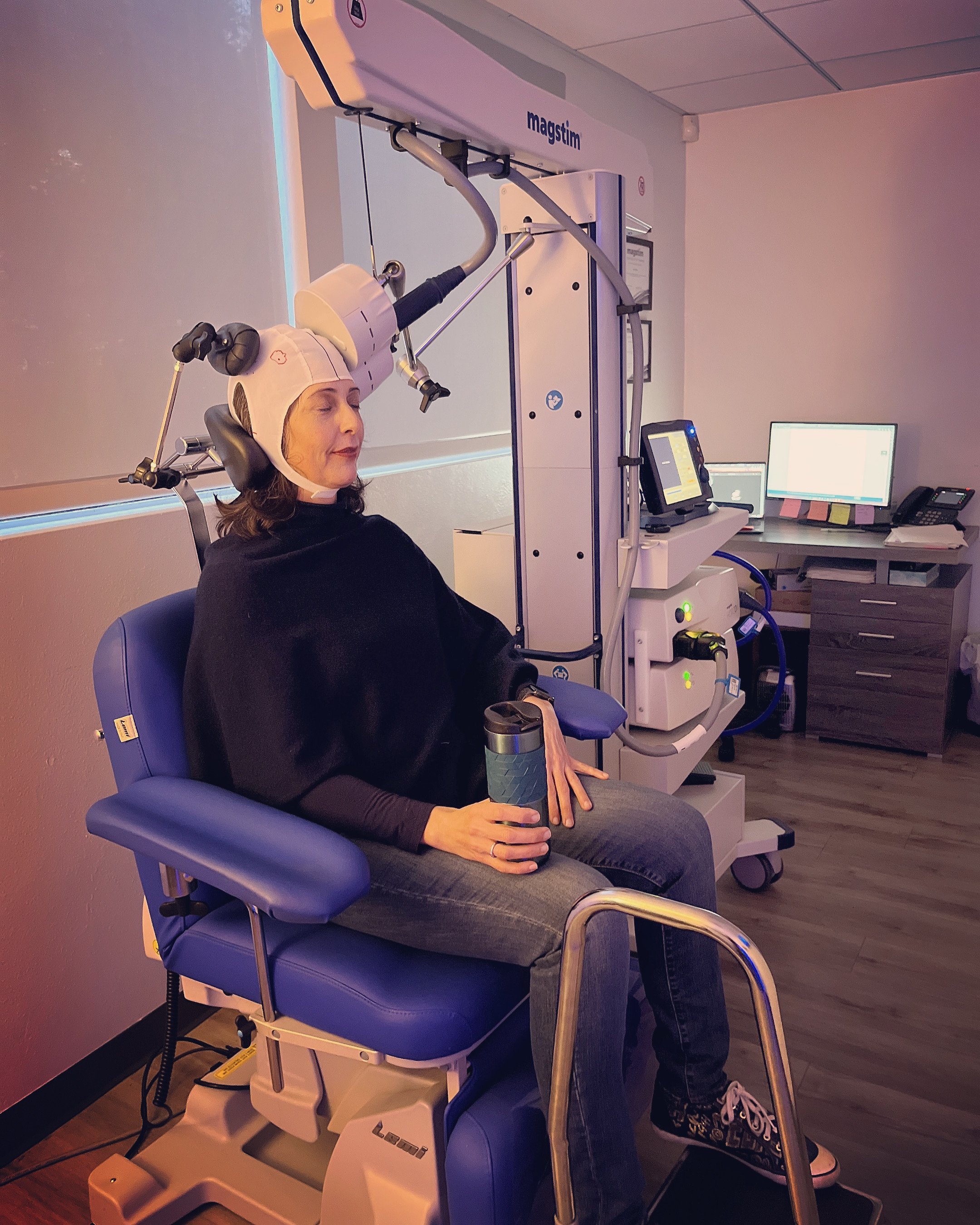Brain Stimulation May Prevent Chronic Pain Before It Starts
/By Pat Anson
Transcranial magnetic stimulation (TMS) is a noninvasive procedure that uses magnetic pulses to stimulate nerve cells in the brain. TMS is typically used to treat depression, but is increasingly used off-label to relieve chronic pain conditions such as migraine, fibromyalgia and peripheral neuropathy.
Research recently published in the journal PAIN suggests that TMS may also be useful in preventing pain before it even starts.
A team of international researchers gave 41 healthy volunteers a 5-day course of either repetitive transcranial magnetic stimulation (rTMS) or sham treatment. Both targeted the left primary motor cortex, a part of the brain that controls movement.
After the fifth and final session, all of the volunteers had an injection of nerve growth factor into their cheeks to induce prolonged pain. For the next two weeks, participants kept diaries of their jaw pain, jaw function and muscle soreness.
“We found that a five-day course of rTMS before pain onset has the potential to interrupt the transition to chronic pain,” said lead author Nahian Chowdhury, PhD, Head of Neurostimulation at the NeuroRecovery Research Hub at the University of New South Wales in Australia.
“We were looking to see what the experience was for participants who had received the rTMS, versus what happened for those who had received the sham. Those people who had received active rTMS experienced lower pain on chewing and yawning than those who received the sham.”
Chowdhury and his colleagues also found that two measurements of brain activity -- Peak Alpha Frequency (PAF) and corticomotor excitability (CME) – seemed to moderate pain whether participants received rTMS or not. This suggests that monitoring PAF and CME may be useful in predicting each individual’s pain resilience.
“Regardless of whether people received the active treatment or sham, our analysis showed that those with faster PAF and higher CME on Day 4 had lower intensity future pain,” Chowdhury said in a news release from NeuRA, an Australian medical institute where he is a research fellow.
This is the first study to show that rTMS can have a protective effect against chronic pain. More research is needed, but the findings open the door for preventative treatments for those at high risk of developing chronic pain.
“Whilst chronic pain is a significant problem, the current interventions are usually only applied once the pain is chronic,” Chowdhury said. “This research shows in some situations – such as for people undergoing a surgery known to be painful or often leading to chronic pain – there is promise from preventative treatments that may be able to stop chronic pain before it begins.”
PNN Columnist Madora Pennington, who has Ehler-Danlos syndrome, tried TMS therapy and found it eased her pain, depression and anxiety.
“Since having TMS, I notice that my body is less sensitive to touch,” she wrote. “It does not hurt as much to be poked at or pressed on. The extra comfort TMS has given me, both mentally and physically, is a lot for someone with medical problems like mine that are so difficult to treat.”




